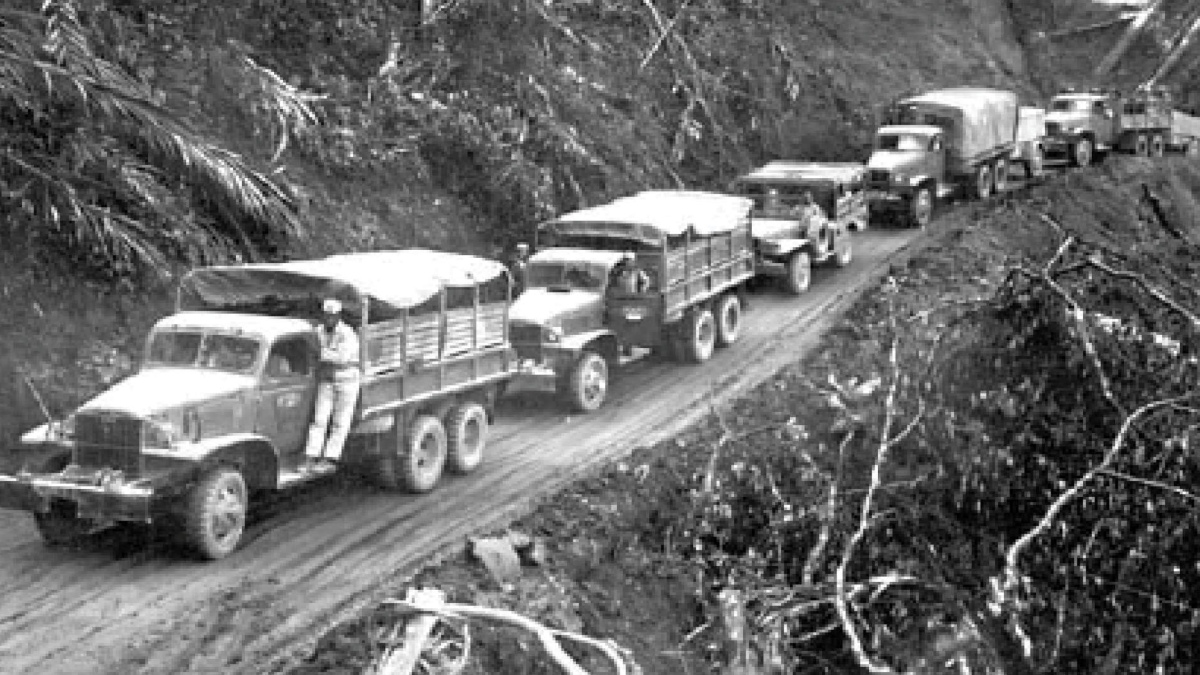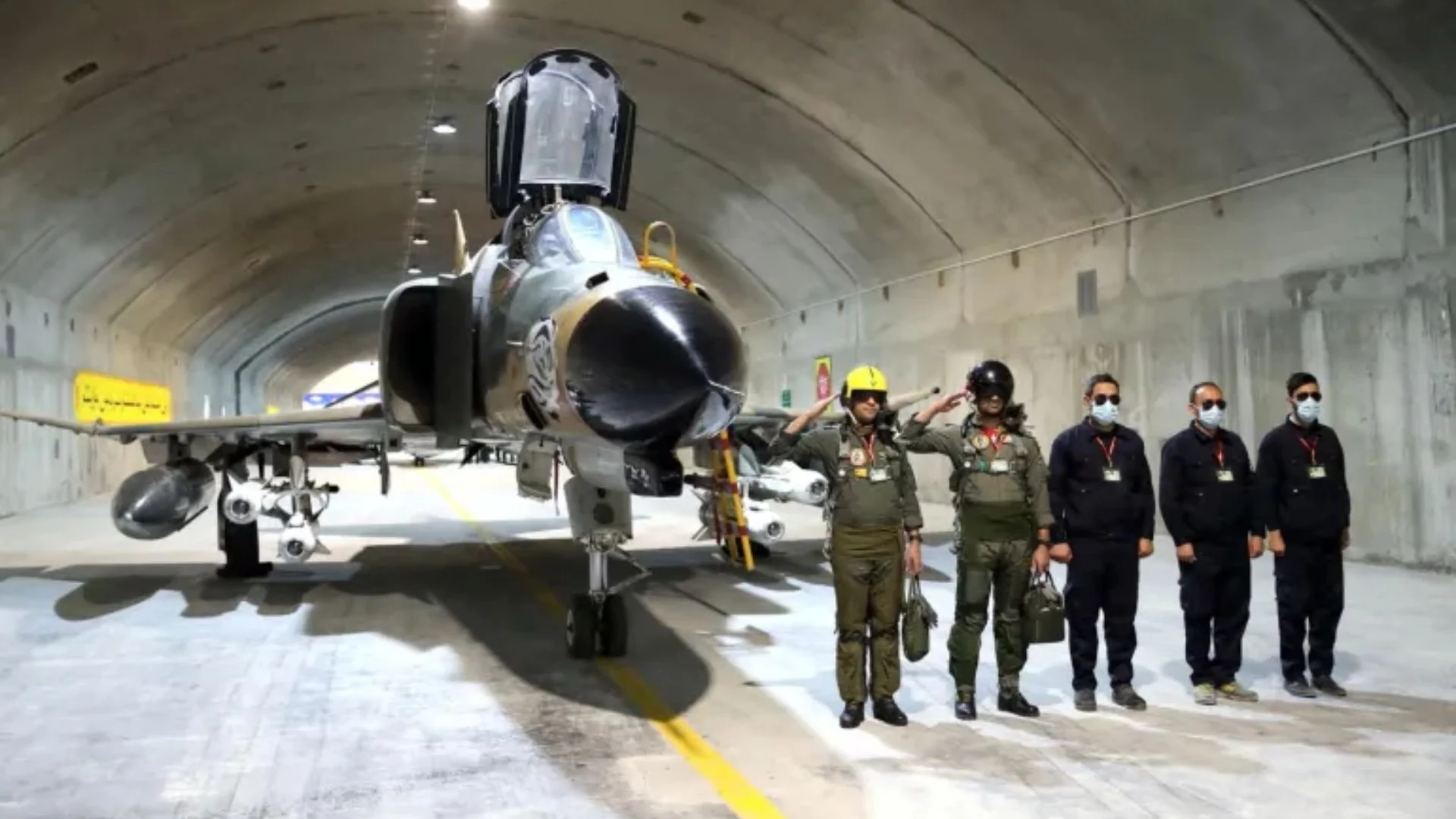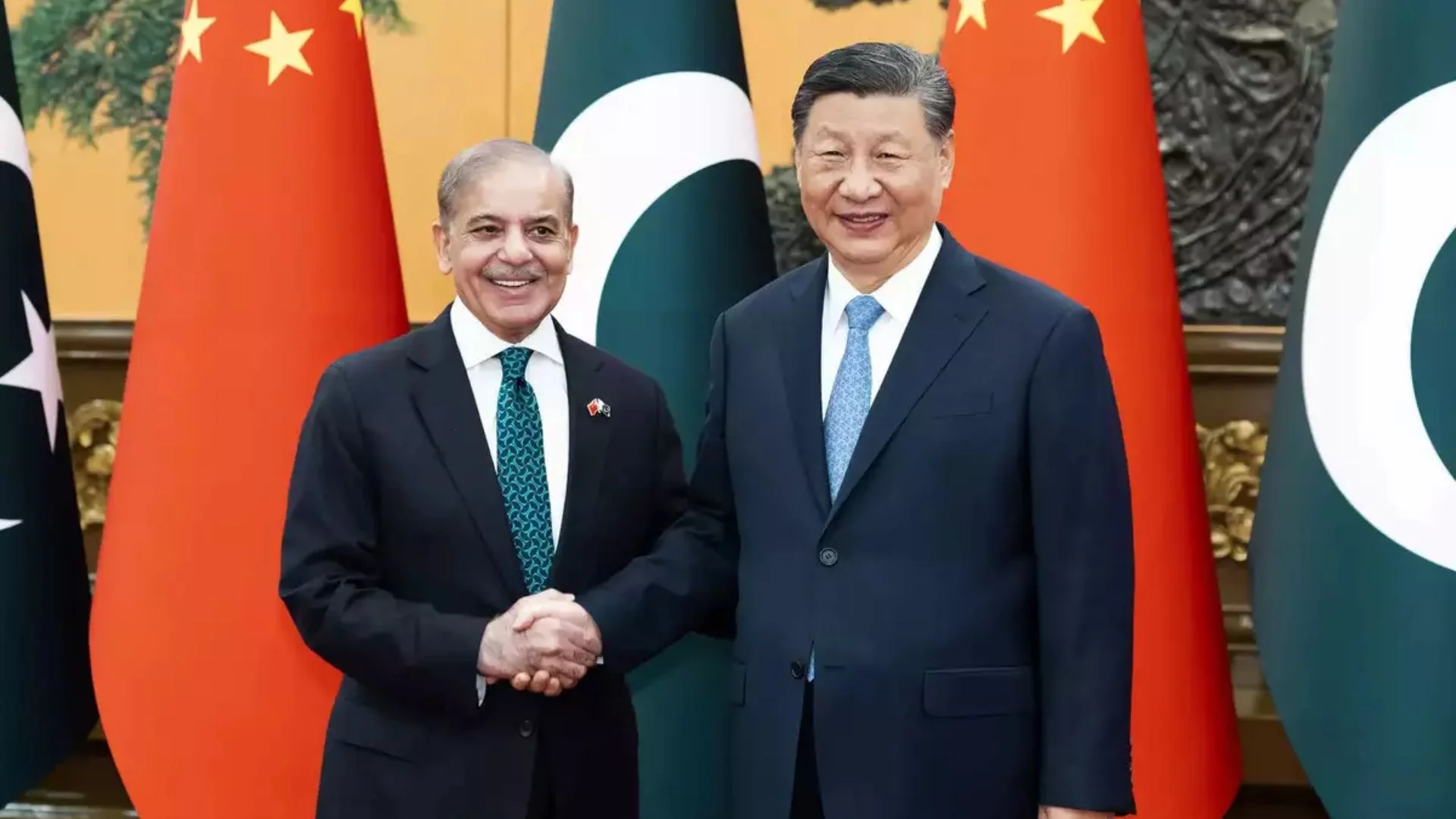The Stilwell Road which was lost in geostrategic calculus during the Cold War period gained geo-economic relevance in the backdrop of India’s Act East policy under the canopy of neoliberal architecture. The road was considered a prime mover for cross-border trade and economic integration with the Association of South East Asian Nations (ASEAN) having wider implications for India’s Northeastern states as well. The Stilwell Road, originally known as Ledo Road, is named after American General Joseph Warren Stilwell, who undertook the responsibility of constructing the project in December 1942, to open communication links for the Allied forces from India to send reinforcements to Kunming in Yunnan province of China and subsequently free Burma from the clutches of Japanese forces.
 Stilwell Road in 2015 (Nampong section)
Stilwell Road in 2015 (Nampong section) Stilwell Road during World War II. (Photo: National Archives and Records Administration)
Stilwell Road during World War II. (Photo: National Archives and Records Administration)
During its completion in 1944, the road was used as a major supply route for the transportation of arms, troops, and other essential materials for the Kuomintang Army of China in its war against Japan. The road covering a distance of 1726 kilometers starts from Ledo in Assam (India) and goes across Nampong in Arunachal Pradesh (India) and Shindbwiyang, Bhamo, and Myitkyina in Kachin (Myanmar) and further links Ledo-Burma roads junction to the city of Kunming in China. The road covers 61 km in India, 1033 km in Myanmar, and 632 km in China respectively.
Initially, Myanmar was skeptical about re-opening the Stilwell road, because it ran across the insurgency-infested Kachin region upon which the Military Junta did not have any control. Later, Myanmar Government assigned the contract to Yunnan Construction Engineering Group of China and the military-backed Yuzana group in 2010 to reconstruct 312-kilometer road from Myitkyina in Myanmar to Pangsau pass at the India-Myanmar border. India has renovated its portion of Stilwell road through two-lane highways, while China has renovated its own segment through six-lane Highways. The experts working in this field opined that rebuilding of Myitkyina-Pangsau Pass would reduce the cost of transport by about 30 percent benefitting India, Myanmar, and China for bilateral as well as multilateral trade. Generally, goods from India’s Northeast are brought through road and railways of narrow Siliguri corridor to Kolkata covering near about 1,600 km and then transshipped through the Strait of Malacca to South East Asia and China. The present route takes about seven days for the landing of cargo whereas the same consignment through the Stilwell route can land in Myanmar and China in less than two days. In my opinion, if the Myanmar segment is completed, then the Ledo-Nampong corridor could be connected to Muse, Lashio, Mandalay, and Yangon (Myanmar) through Asian Highway (AH14); Ruili, Wanding and Kunming (China) through AH3 and Bangkok (Thailand); Kuala Lumpur (Malaysia) and Singapore (Singapore) through Asian Highway 2(AH2) and further to Phnom Penh (Cambodia) and Hochi Minh city (Vietnam) of grater Mekong sub-region through Asian Highways 1(AH1). It is envisioned that such type of transnational-connectivity corridors would help in strengthening free trade architecture eventually pave the way for regional and sub-regional cooperation.
In this context, the opening of the Stilwell road at the India-Myanmar border would create scope for cross-border trade and economic collaboration in the region involving India’s Northeastern states. It is pertinent to mention here that the Nampong Land Custom Station (Arunachal Pradesh) notified since 1951 has largely remained non-functional and the border trade was limited to informal channels. At present, Indian nationals are allowed to visit the Pangsau market (Myanmar side) on the 10th, 20th, and 30th of every month. Likewise, Myanmar’s nationals living 16 km from its borer are permitted to visit Nampong every Friday to purchase their necessary items. In case of any formal border trade, there would be a rush forward in both imports and exports, and as a consequence, it would strengthen the pace for cross-border collaboration involving both hardware and software resources for the benefit of all the stakeholders in the region.
India’s prime apprehension is that in case ‘We Act East’ through the Stilwell Road, then India’s Northeast will be swamped with cheap Chinese goods. This kind of economic threat perception cannot be denied given the nature of the easy overflow of Chinese goods into the Indian markets including the Northeast. Equally, it is pertinent to mention that China has already spread its tentacles in our neighbouring South/ South East Asian countries through several infrastructural projects, the most touted, Belt and Road Initiative (BRI) posing it as the economic hegemon of the continental corridor. Since India enjoys added advantages over China due to multiplicity of geo-economic, cultural, and strategic factors, New Delhi can drag the ASEAN very well in its favour by forging a closer partnership with the latter through transnational connectivity projects and deeper economic linkages. In this context, Stilwell road could be a game-changer, and set the momentum for the economic engagement of Northeast with ASEAN, subsequently balancing India’s national interest vis-à-vis China.
The writer is an Associate Professor at the Centre for West Asian Studies, School of International Studies, Jawaharlal Nehru University, New Delhi. Views expressed are personal.
The road covering a distance of 1,726 km starts from Ledo in Assam and goes across Nampong in Arunachal Pradesh and Shindbwiyang, Bhamo, and Myitkyina in Myanmar and further links Ledo-Burma roads junction to the city of Kunming in China.























